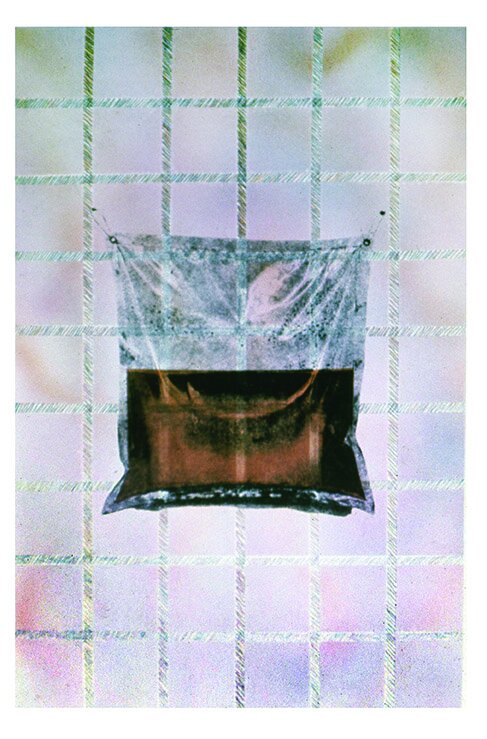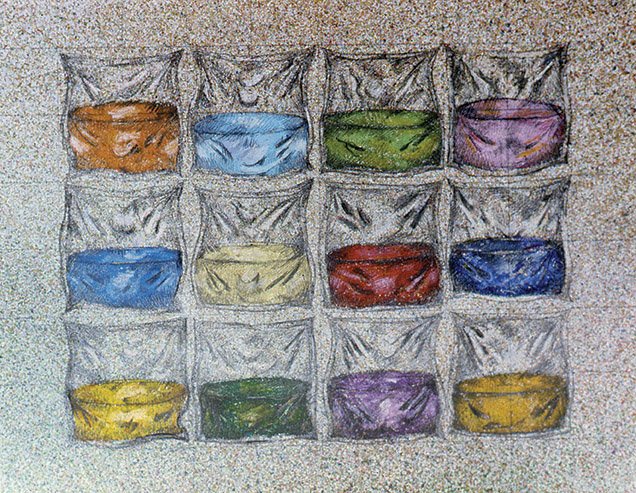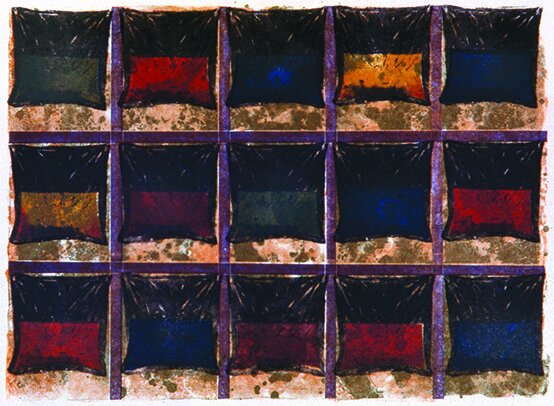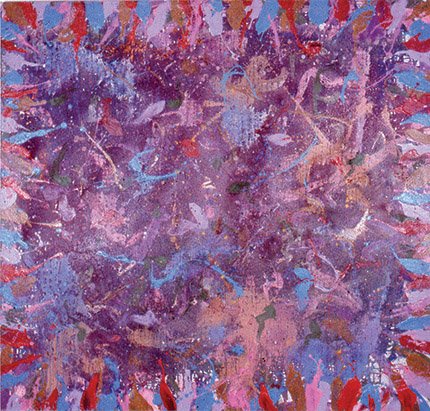Route 44 – A Journey, Chapters, Chapter 6, 7 & 8
Chapters, 6, 7 and 8
Chapter 6
I had now completed half of my required 56 hours for my graduate MFA degree and was in the middle of the spring 1972 semester. Because of my anticipated graduation I started preparation for my Senior Exhibit. The first step was contacting my graduate committee advisors and scheduling the show. My committee consisted of Gene Bavinger, George Bogart and Pete Bache. My first contact was George Bogart. When I approached him and told him I wanted to talk about my senior show he said “Why, you have a whole year left before graduation.” I immediately knew I was in trouble. I explained what I was trying to do and why and he said the program was a minimum 2 year program and that it was not possible to complete it in only one year. I explained that I had talked to the Director, Joe Hobbs, and he had told me there were no restrictions on minimum time spent. George was very concerned and sympathetic but was not very optimistic that I would be allowed to graduate in one year. I again stated that after the current semester I would only have 12 hours remaining and that I had already completed 12 hours during the last summer term and was sure I could repeat that performance. He said that he would talk to the Director and get back with me, but not to get my hopes up. I quickly approached the rest of my committee and got the same shock and disbelief. They also said they didn’t think that this would be possible. When Joe Hobbs was confronted about the situation he simply denied ever having said that and said I must have misunderstood. It was obvious that I was not going to win this battle. A new policy was created that specified there was a minimum of a 2-year residency that was required before completing the MFA degree program. At the time I was devastated. This would mean that I would miss my window of opportunity for the teaching position at Cameron (my dream job) and there would be no guarantees of a teaching job anywhere. In addition, I would have to spread my remaining 12 hours over another year. This just seemed unfair and a waste. Looking back on it now, it wasn’t such a bad thing. The truth is I don’t really know if the casual commitment from Jack Bryan was a real job offer. At the very least, I would have had to apply like everyone else and win the job with my credentials, body of work and personal interview. Sure, I had some things going for me but I was also very, very young. As it turned out I told my friend Dwight Pogue about it and he applied and got the job. I hoped that by the next year there might be another position or that Dwight would not like it there and move on, but I knew the chances were pretty slim.
OK, welcome to my new reality. What do I do now? After 5 years in college, 4 undergraduate years and 1 in grad school, what do I do now? I wasn’t going to quit; there was no logic in that. One thing was certain, I could S L O W down. There was no reason to enroll in summer school, I only had 12 hours left and I had to spread those out over the next year. After taking 16 hours each regular semester taking only 6 was going to take some adjustment. So, I decided to take the summer off, try and relax and wrap my head around finishing and the job search that would follow. I was still working with the bag series and was still pretty excited about the potential there so I enrolled in 6 hours of painting for the fall semester. You know the funny thing about it, this exercise in writing has forced me to remember everything possible about past events that relate to my work and I can’t remember anything about that summer. I guess for the first time my thoughts were not consumed with work and love number two. I guess I relaxed and just enjoyed life for a while. I do remember a lot of spring and summer evenings with fellow grad student friends playing Ping-Pong and drinking beer at our little rent house. Most of our friends at that time were fellow grad students and their wives who were a year ahead of me in the program. Most of them had just graduated and were in the process of looking for a University teaching position. This was something that I knew I now would be consumed with in another year, so watching them go through it really helped me prepare. I had a part-time job as a maintenance man for an apartment complex, which eventually led to us moving to a newer complex where we became assistant managers. This job only lasted about a month. The job paid for half of our rent, which was the equivalent of $75.00 a month, and for that huge amount of money we got to be responsible for the entire complex of about 50 apartments. You know Jo and I have never been real good with money or anything that had to do with finances, but in less than a month we both realized that this was not a good financial decision. I only had about 8 months left until I graduated so we decided to stay and just pay the full amount for rent.
Chapter 7
Fall semester started and I continued to work with bags of colored liquid. Each piece became more elaborate in construction and the development of each component. They also became more and more dimensional. The final couple of pieces were free standing structures made with a complex redwood 1”x2” frame that supported the bags. They were large massive pieces and even I would have a difficult time justifying them as paintings. The largest was a grid construction that was 8’ x 8’ x 1’. This piece had 144 bags that were 12” square hanging in each open 12” space of the grid. The weight was unbelievable. I assembled this piece in my studio at the time, which if you remember, was an old bathhouse. My space was the shower area so there were drains in the floor and the floor slanted toward the drains. This slant made the piece lean slightly. People were afraid to come into the room because they were afraid the structure would fall on them. In reality there was no way it could fall because the weight stabilized the piece. In retrospect, I think the reason I continued to build and highly craft these elaborate pieces had to do with me wanting to give or make these pieces more permanent, more like traditional paintings, more like pretty pictures.
Toward the end of the semester I started doing some drawings of the colored bags. They were a little smaller and more personal than the large major pieces. They were still big, particularly for drawings, they were 18”x24” up to 22”x30” in size. I used a variety of media to produce these drawings including graphite pencils, colored pencils, oil pastels and acrylic paint. The paint was primarily used for the backgrounds and was applied with a spray gun and traditional brushes. These were important transitional pieces because they bridged the gap between two distinctively different bodies of work. I had been working with bags and the arranged process for about a year. This is not a particularly long time but it resulted in a large body of work that explored a lot of related but different concepts. I found myself really missing the physical aspects of making more traditional art, “pretty pictures.” These drawings were a way to use my hand skills and produce more traditional art that had a relationship to the current “bag” series. The interest in these drawings led me back to an interest in printmaking, my original undergraduate degree. I decided to enroll in a lithography class my final semester. This was an area of printmaking that I had not explored. At OU at that time graduates did not actually have specific classes. They enrolled in hours under a specific instructor and worked independently. I enrolled in 3 hours under one of the printmaking instructors. As it turned out, Ralph Steeds, the other graduate student that was admitted with me was a printmaker. The graduate studio for printmaking was back on the main campus. Ralph and I were the only students working in this space so we got to know each other pretty well. Ralph was a very disciplined technician and taught me a lot about stone lithography. During this period of time I worked on perfecting my skills in printmaking, particularly in lithography. This skill set eventually proved to be very beneficial and I’ll talk more about that in a future chapter of this book. I produced several small editions of lithographs primarily to learn more about the craft of lithography. The subject matter for these prints came from the drawings of bags I mentioned earlier in this chapter.
Artist with color bag. The start of a new series!
“Projection Bags” – 4’x4’x2’ - plastic bags, wood, food color & fluorescent light
“Zip Lock I” – limited edition stone lithograph
“Zip Lock II” – airbrush, graphite & stone lithograph
“Twelve Baggies on a Bed of Acrylic” – graphite, acrylic, oil pastels on paper
“Zip Lock III” – limited edition stone lithograph
Chapter 8
During the final semester at OU, I split my time working on prints and painting. As I mentioned the concepts and subject matter for the prints came directly from the “bag series” but the paintings were becoming harder to generate new ideas and quite frankly I was becoming less interested in pursuing the visual avant garde direction of the bag series. It had been over a year since I had stretched a canvas and applied paint in a traditional fashion. I missed the craftsmanship. I missed the act of painting. I consistently read about contemporary art and artists in books and magazines. I started this practice as an undergrad student in an effort to learn about and keep up with art trends. In most reference books and magazines like “Art in America” and “Art Forum,” I learned about the conceptual thinking of individual artists but rarely did I learn anything about their techniques or personal methods of painting. Occasionally I would learn what media was used but that was about it. I was particularly fond of the Abstract Expressionists. I often thought how exciting it would be to have lived in New York City in the early ‘50’s with the explosion of Abstract Expressionism and Cool Jazz. Watching artists like Jackson Pollock, Willem de Kooning, Franz Kline and Robert Motherwell mixing with Miles Davis, John Coltrane, Dave Brubeck and Stan Getz as they developed their unique and new styles of art and music.
On rare occasions I would come across some information about an artist and their experimentation with different non-traditional materials. I was always very interested in the process, something I definitely picked up from Gene Bavinger. While reading about Willem de Kooning, I learned that he experimented with several different types of oil medium. He first departed from the traditional linseed and stand oil and tried poppy-seed oil that gave him a more fluid mixture. He then abandoned the poppy-seed oil for safflower cooking oil. He bragged that he had found a salad oil that he could use in lieu of expensive artists’ oils. This sounded great to me. I had never painted much with oils and I really wanted to try it. I had become very dependent on acrylic paint and polymer additives to produce large volumes of paint inexpensively for my large paintings. This new “salad dressing” formula sounded like a great way to approach large-scale oil paintings. So, I headed to the grocery store to purchase art supplies. At my local Safeway (pre Homeland) store they didn’t have any safflower oil, so, regular old Wesson oil would have to do. I bought a gallon and headed back to the studio. I stretched up a large canvas, primed it with house paint gesso and set it aside to dry. That night I continued to read and research about de Kooning’s techniques. I read that he really like this new medium because of its liquid state. He stated that it “stays wet a long time, it doesn’t dry like linseed oil, I can work longer.” He was definitely right about that. I found out that his brand of choice was Saff-o-life safflower oil. That must have been a New York only brand; I couldn’t find that brand or any other brand of safflower oil in local grocery stores. I also read he often mixed the oil paint, safflower oil, solvent and water together, whipping it into a fluffy consistency. Wow, mixing it with water, I had never heard of such a thing, but it gave me a lot of ideas. The next morning I headed to the studio with a few new tubes of oil paint and a lot of ideas. I took the canvas and placed it on the floor. I took my oil paint and mixed a specific color then added a large amount of the Wesson oil and started mixing it with a 1” brush. Amazing, this stuff was great. Beautiful rich color with that famous buttery smooth consistency. I added a little thinner until I got a very fluid mixture. I went to the canvas and started pouring, spattering, slinging, brushing, all with my newly found energy and passion. I loved what I was accomplishing so this added to the energy and it all showed. I quickly went back to my paint and mixed another color and rushed back to the canvas. Then I got really crazy. I mixed up another color with acrylic paint; let’s break all the rules! Unlike de Kooning, I didn’t whip the oil and water mixture together; I let them repel each other. This rule of opposites is the fundamental reason lithography works as a printing method and I wanted to see what would happen with paint. It created a beautiful marbling effect on the canvas. I continued the entire day barely stopping to eat. I left the painting on the floor and headed home very satisfied with my new approach and very excited to continue this new series. When I returned the next day I was pleasantly surprised to find the painting rich in color and very energetic. The oil paint was dry to touch so the de Kooning / Hefner formula (my part was the substitution of Wesson oil) seemed to work. My semester work-load was very light so I decided to continue this new direction with the possible goal of showing these new pieces in my senior show, which was scheduled at the end of the semester. I started building more stretcher frames immediately. As the paintings progressed, it looked like I was going to have enough to show, so I started asking for more space in the gallery area to accommodate a good selection of the bag paintings and the new oil paintings. The show was scheduled in the new Art building in the light well gallery. The light well gallery was really only one long wall and I felt that it would be adequate for the bag paintings, but would not be well suited for the oils. The honest truth was the two series were so visually different, they did not show well together. The basic concepts had not changed much but the process and application was so different they really didn’t look like the same person produced them. I asked the Chair of the Department if I could have more space and he allowed me to have an entire adjoining room. This room was designed to be an independent classroom, but it worked well as an overflow room for the gallery. I liked it because I could physically separate the work. This room did not have gallery lighting but it was a good space with open walls. I hung the bag pieces in the light well. I hung the oil paintings in the overflow room along with the three-dimensional bag pieces. I was pleased with the show even though it looked like two completely different artists. I decided earlier to focus on painting in my final thesis show rather than mixing in prints and drawings even though I was producing new work in both categories. Now I was ready to defend my work before my committee before receiving my MFA and I was expecting to have quite a debate because of the visual diversity.
It was finally here, the end was in sight, my graduate degree was just days away. The required two years had been finished, the thesis show hung and reviewed and my defense was scheduled. As I mentioned, I was a little concerned about that last step but determined to finish strong. Well, as it turned out, it was no big thing. My committee and I met in the overflow room. After they took one last look at the entire show, we all sat down. They asked a few questions about technique on the most recent oil paintings and then asked if I had any teaching job leads. That was it, all the preparation on concept, rationale and philosophy, all the physical work, all the pain and joy – over in 5 minutes. To this day, I don’t really know how they felt about the work. It was obviously good enough or maybe they felt they had given me all they could and it was just time for me to go. The one thing I do know is I was extremely relieved. Now, for the rest of the story. . .remember I mentioned how important that last semester and the printmaking course was, well as it turned out, I entered every print and drawing show that I could find that semester and was accepted in several. One of the most prestigious was a national competition at Davidson, North Carolina. I didn’t realize at the time how prestigious this show was or how competitive, but it was one of the top print and drawing competitions in the Country at that time. Later, during the summer, in the middle of the massive job hunt, I got a positive response from a small school in North Carolina, Pembroke State University in Pembroke, North Carolina. As it turned out, I sent out over 600 letters of inquires to Colleges and Universities all over the United States and got one interview. That interview turned out to be that small school in North Carolina 30 minutes down the road from Davidson, North Carolina – the same Davidson that hosted the national print and drawing competition where I had recently been accepted. A coincidence, maybe but I doubt it.
After the bag series, I missed the traditional aspect of applying paint to canvas, so I experimented with mixing oil and acrylic in a small but significant group of work. This series of work was inspired by Willem de Kooning.
“Under the Big Top” – oil and acrylic on canvas
“Thesis Color Study” – oil, acrylic on watercolor paper
“New Growth” – oil & acrylic on canvas
“Untitled” – oil & acrylic on canvas
Thesis Show – Light Well Gallery, University of Oklahoma












